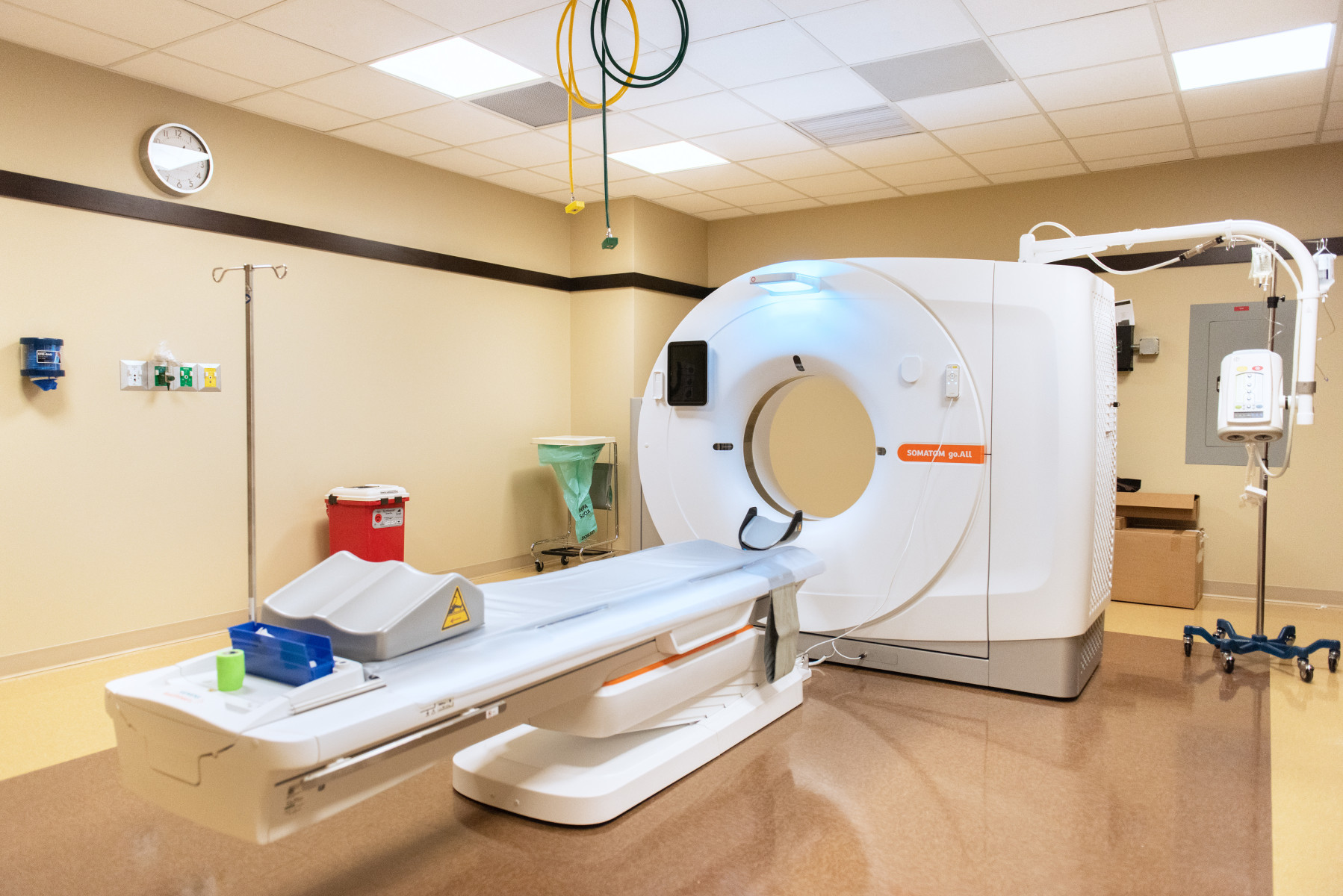
As the COVID-19 pandemic continues to spread across the U.S., medical experts and healthcare professionals are urging for federal and local implementation of stricter social distancing measures, accelerated production of personal protective equipment and more testing for SARS-CoV-2, the virus that causes COVID-19.
Over the last few months, the emphasis on COVID-19 testing across the country has also expanded to include antibody testing to better understand how much of the population has already been infected, as many cases are asymptomatic.
Specifically at Northwestern Medicine, various antibody testing efforts have been underway since the beginning of the pandemic. These efforts include the development of a more sensitive, at-home test to detect SAR-CoV-2 antibodies and using this test and commercially available antibody tests to determine previous infections of COVID-19 and potential immunity to the virus, both in the Northwestern Medicine community and in the greater Chicagoland area.
Developing a New COVID-19 Antibody Test

Recently, a multi-disciplinary team of Northwestern scientists developed a new, at-home method for testing for SARS-CoV-2 antibodies, which requires just a single drop of blood collected from a finger prick.
The test was developed by Thomas McDade, PhD, the Carlos Montezuma Professor of Medical Social Sciences and of Anthropology at the Weinberg College of Arts and Sciences; Elizabeth McNally, MD, PhD, the Elizabeth J. Ward Professor of Genetic Medicine and director of the Center for Genetic Medicine; Alexis Demonbreun, PhD, assistant professor of Pharmacology; Brian Mustanski, PhD, professor of Medical Social Sciences, Psychiatry and Behavioral Sciences, and director of the Institute for Sexual and Gender Minority Health and Wellbeing (ISGMH); Richard D’Aquila, MD, director of the Northwestern University Clinical and Translational Sciences Institute (NUCATS) and the Howard Taylor Ricketts, MD, Professor of Medicine in the Division of Infectious Diseases and associate vice president of research; and Nanette Benbow, MA, research assistant professor of Psychiatry and Behavioral Sciences.
Most viral testing for SARS-CoV-2 has relied on polymerase chain reaction (PCR) analysis, which involves studying a small sample of DNA extracted from a nasal swab to detect the presence of the virus in the body.
On the other hand, serological testing, also known as antibody testing, is able to detect the presence of immunoglobulin M (IgM) and immunoglobulin G (IgG) antibodies in blood samples taken from those who have been previously exposed to the virus that may potentially neutralize SARS-CoV-2 and provide immunity to the virus; IgG antibodies develop in most patients within seven to 10 days after symptoms of COVID-19 begin and remain in the blood after infection.
Serological testing is useful for determining an individual’s prior exposure to a virus, such as SARS-CoV-2. However, there are limitations to current testing approaches: precise lab-based tests which require venous blood are a challenge to conduct during the pandemic when public health mandates limit visits to healthcare facilities and point-of-care tests using finger stick blood are qualitative, often inaccurate and must be conducted in clinical settings.
The newly developed test, detailed in a forthcoming PLoSONE publication, combines the at-home convenience of finger stick blood sampling with the accuracy of quantitative lab analysis.
“Antibody testing essentially allows us to look back in time and see who has been infected, regardless of their symptoms, identify how and where the virus spread, and what factors in the community promote transmission,” McDade said.
The test builds on the work of McDade’s dried blood spot (DBS) collection method, in which drops of blood are collected from a finger prick and put on a special filter paper sheet to dry. McDade, a biological anthropologist, first developed the method to detect biomarkers of inflammation in non-clinical settings, a method both he and other members of the field have used for numerous population-based studies around the world.

When the COVID-19 pandemic began, McDade realized that the need for SARS-CoV-2 antibody testing in the community was inconsistent with the state of Illinois’ stay-at-home order. In response, the team of scientists developed a testing platform that is inexpensive, relatively painless, can be done in nonclinical settings such as one’s home, and collected samples can be easily sent back to the lab by mail.
Specifically, the team developed two protocols to detect SARS-CoV-2 IgG antibodies; one for use with standard serum samples, and the other for DBS. Both used enzyme-linked immunosorbent assay (ELISA) procedures to detect these antibodies against the receptor-binding domain (RBD) of the SARS-CoV-2 spike protein, which is located on the surface of the virus and helps the virus enter and infect human cells.
In the lab, the researchers used manufactured RBD and attached it to the bottom of small wells in a format where 96 samples can be tested at once. The dried blood spot is first placed in liquid, and then the liquid, which contains the antibodies from the blood spot, is added to a well of the 96- well plate. If antibodies that recognize the RBD antibodies are present, they will be “captured” by the RBD that is stuck to the plate. A second antibody that is linked to a color response system provides a quantitative result indicating how much antiRBD is present.
The test can measure antibodies against RBD portion of the virus as an indicator of prior exposure to the SARS-CoV-2 virus with a higher degree of sensitivity and specificity than commercial tests that are currently available.
“We designed our tests to look at the community, whereas commercial tests are really designed to look at hospitalized people. We know hospitalized people have higher levels of antibodies compared to people who had mild or asymptomatic cases of COVID-19,” McNally said.
The greatest challenge wasn’t actually developing the test itself, but rather the severe shortage of testing materials and supplies, as well as the manpower to mail tests to participants — both due to the pandemic, according to McNally. Due to a shortage in supplies, the team manufactured their own key reagents to develop the test, working at both Northwestern’s Evanston and Chicago campuses to ramp up development, validate the test and then build a testing platform that could actually be used in the community.
“We had contacts with many vendors, which enabled us to purchase and manufacture the materials needed for the antibody test. We were already developing ELISAs for another project, so it was very easy to translate what we were already doing for our muscular dystrophy research and implement it in COVID-19 research,” Demonbreun said.
Antibody Testing in the Community
Early on, the team was determined to use their test in the community, particularly in Chicago where transmission rates have continued to increase and disparities in rates of transmission and risk of mortality persist. So, in June, the team launched the Screening for Coronavirus Antibodies in Neighborhoods (SCAN) study.

“Much of our approach to COVID-19 has been clinic based, but fundamentally COVID-19 is a community-based problem,” McDade said. “That’s where our best efforts of prevention should be focused and it’s also where the virus is having its most devastating social and economic impact.”
SCAN combines the new at-home antibody test with a webbased, no contact research platform developed by a team led by Mustanski to enroll, survey and track participants, as well as securely return test results once samples are mailed back to the lab and analyzed.
Through this innovative, “pandemic-friendly” approach, the study aims to determine how many people in the community have been exposed to SARS-CoV-2 and developed antibodies to the virus, identify factors in the community that promote or mitigate transmission and, in the long-term, pinpoint what factors may predict future infection or immunity to subsequent infection. The web platform for recruitment, consenting and results reporting uses REDCap, a resource supported by the NUCATS Institute.
Currently, the study is open to Chicago residents living in ten neighborhoods across the city, and to Feinberg essential workers with plans to expand to the rest of Feinberg’s workforce. A recent $200,000 RAPID grant awarded to McDade from the National Science Foundation is funding the study which will test 3,000 Chicago residents. In addition, a recently awarded $678,000 supplement grant to the McNally from NUCATS in coordination with the National Institutes of Health will help extend the study to areas beyond Chicago and into the NUgene Project, a genomic biobank sponsored by the Center for Genomic Medicine. She also received an NCATS Administrative Supplement to extend SCAN to eMERGE and NuGene participants.
“The diverse expertise of our team and our strong collaboration have enabled us to do much more than we could individually,” D’Aquila said. “I’m most excited that the SCAN platform may be able to contribute to future research aimed at understanding if an immune response, and which type, may protect against reinfection with this virus — we just don’t know that yet and it will take time to get those answers we all need to advance public health.”
Other antibody testing efforts currently ongoing at Northwestern Medicine are being led by John Wilkins, MD, ‘11 MSCI, ‘12 GME, associate professor of Medicine in the Division of Cardiology and of Preventive Medicine in the Division of Epidemiology, and Charlesnika Evans, PhD, MPH, associate professor of Preventive Medicine in the Division of Epidemiology. The duo is currently leading a study that will give every Northwestern Medicine employee — roughly 38,000 individuals — the opportunity to have SARS-CoV-2 antibody testing.
In April, Northwestern Medicine began offering free SARS-CoV-2 antibody testing as a benefit to its entire workforce through utilizing a commercially available test developed by Abbott. Recognizing this as a great research opportunity, Wilkins, Evans, and Mark Huffman, MD, MPH, the Quentin D. Young Professor of Health Policy, put together the framework for the study.
“All healthcare workers face some risks for developing COVID-19, so we realized that we needed to have a systematic way to understand how much exposure to this virus is actually occurring in different types of healthcare workers,” Wilkins said.
The aim of the study three-fold, according to Wilkins. First, the team wants to understand the prevalence of SARS-Cov-2 IgG positive status and the incidence of developing antibodies against SARS-CoV-2 amongst Northwestern Medicine healthcare workers of all occupations and demographics. They also want to determine what factors may impact a change in a person’s antibody status and, lastly, if their risk for developing COVID-19 in the future depends on what their antibody status was previously.
In June, all Northwestern Medicine employees were notified of the antibody testing benefit via email, which included a link to participate in the study. Those interested in participating were asked questions about their demographics, what specific tasks their job involves, any community exposures to SARSCoV-2 that may have occurred, and whether or not they had COVID-19 or related symptoms in the last four months. Through the link, participants also could schedule a time to get their antibody test.
Over the next year, participants will be sent emails once a month asking them whether or not they believe they have had COVID-19. Participants will also be asked to get a second antibody test in the fall, which will allow the investigators to determine whether the participants’ antibody status changes, or doesn’t change, over time. So far, more than 6,600 Northwestern Medicine employees have enrolled in the study, which will remain open for enrollment through the fall.
“There are so many fundamental questions about SARS CoV2 serology that we don’t yet understand, and this pandemic is really highlighting why epidemiology is so vital to medical research. To understand the prevalence, incidence and prognosis associated with SARS CoV-2 serologic status and their determinants, we need studies like this.” Wilkins said.






